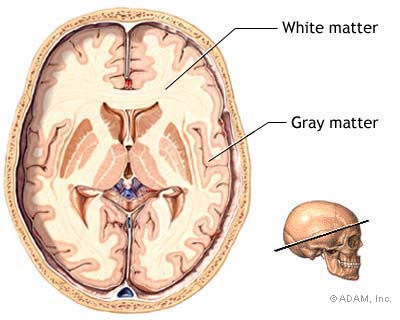
Let the Modelling Begin
Let's begin our discussion of how the tools that we have learned about so far come into play in brain modelling by first discussing why we wish to model the brain surface in the first place.
The cortex (the outermost layer of the brain) is essentially a thin layer of tissue that lies over the white matter core of the brain. The gray matter layer is actually made up of the ends of neurons that travel to it from throughout the body (as well as other regions of the brain) and the white matter is actually composed of the long axons that carry these signals to the cortex from the remainder of the body.
In the interest of simplicity, however, let's look at the gray matter layer as simply a layer of brain tissue. The interest in brain mapping lies in the fact that the brain is a highly wrinkled structure, and this layer of gray matter follows these wrinkles through each valley and ridge.
Most of the brain's surface, therefore, is hidden from view because it lies deep within these wrinkles. In order to be able to study these regions of cortex, we need to somehow "iron" the surface of the brain into a large flat sheet. In order to flatten this surface into a flat sheet, we have to know enough about how the surface is actually shaped to know how to scale this brain map.